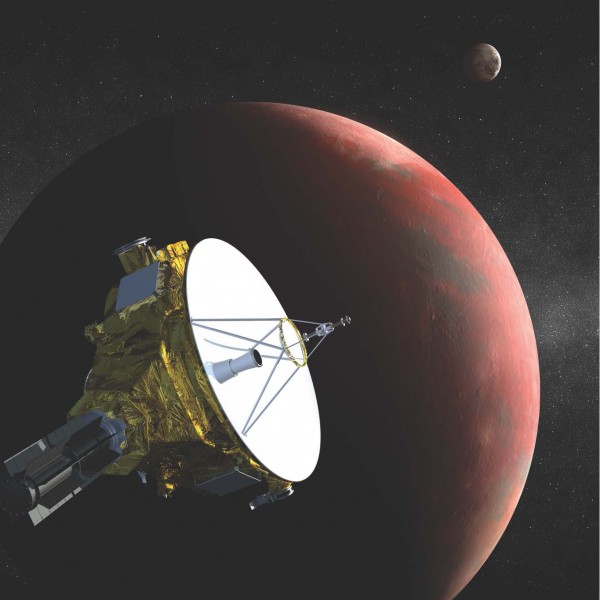UAF researcher works on mission to Pluto
July 7, 2015
Sue Mitchell
907-474-5823

A researcher from the University of Alaska Fairbanks is part of a NASA mission to get close-up photos of Pluto.
Peter Delamere, a space physicist at the UAF Geophysical Institute, is modeling the solar wind’s interaction with Pluto’s escaping atmosphere.
NASA launched the New Horizons space probe on Jan. 19, 2006, to take the first-ever photos of the dwarf planet Pluto and to go beyond into the mysterious Kuiper Belt. In 2007, the probe sent photos of Jupiter as it swung past. New Horizons will have its closest approach to Pluto and its four moons on July 14, 2015.
Delamere's study will investigate the formation of Pluto’s bow shock, which is similar to the waves off the bow of a boat, with the goal of estimating the rate at which Pluto’s atmosphere escapes.
Delamere specializes in comparative magnetospheres, studying a variety of different space plasma systems, such as those on Jupiter, Saturn, and Pluto, to better understand Earth’s space environment and auroral processes. He is a long-time New Horizons mission science collaborator and is funded by NASA’s Solar System Workings Program.
"This is the first mission that I have participated in from beginning to end,” Delamere said. “After the mission selection in 2001, I was involved in preliminary modeling of the solar wind interaction, supporting the design for spacecraft maneuvers during the flyby to maximize plasma science return.”
During the next three weeks, New Horizons will collect a wealth of data that will reveal the true nature of the solar wind interaction and could help scientists understand Pluto's escaping atmosphere.

Information about the New Horizons mission and details about the July 14, 2015, flyby can be found at https://www.nasa.gov/mission_pages/newhorizons/main/index.html.
ADDITIONAL CONTACT: Peter Delamere, peter.delamere@gi.alaska.edu, 907-474-6442


